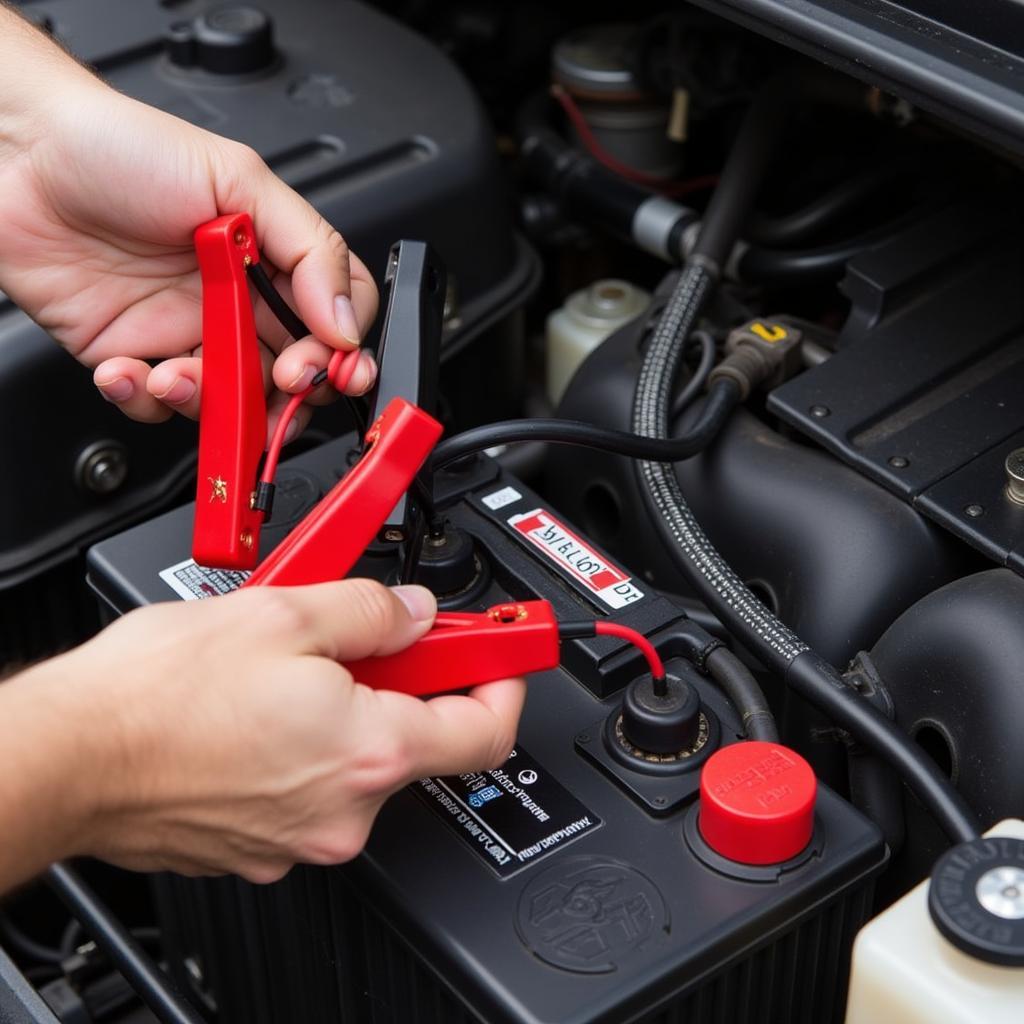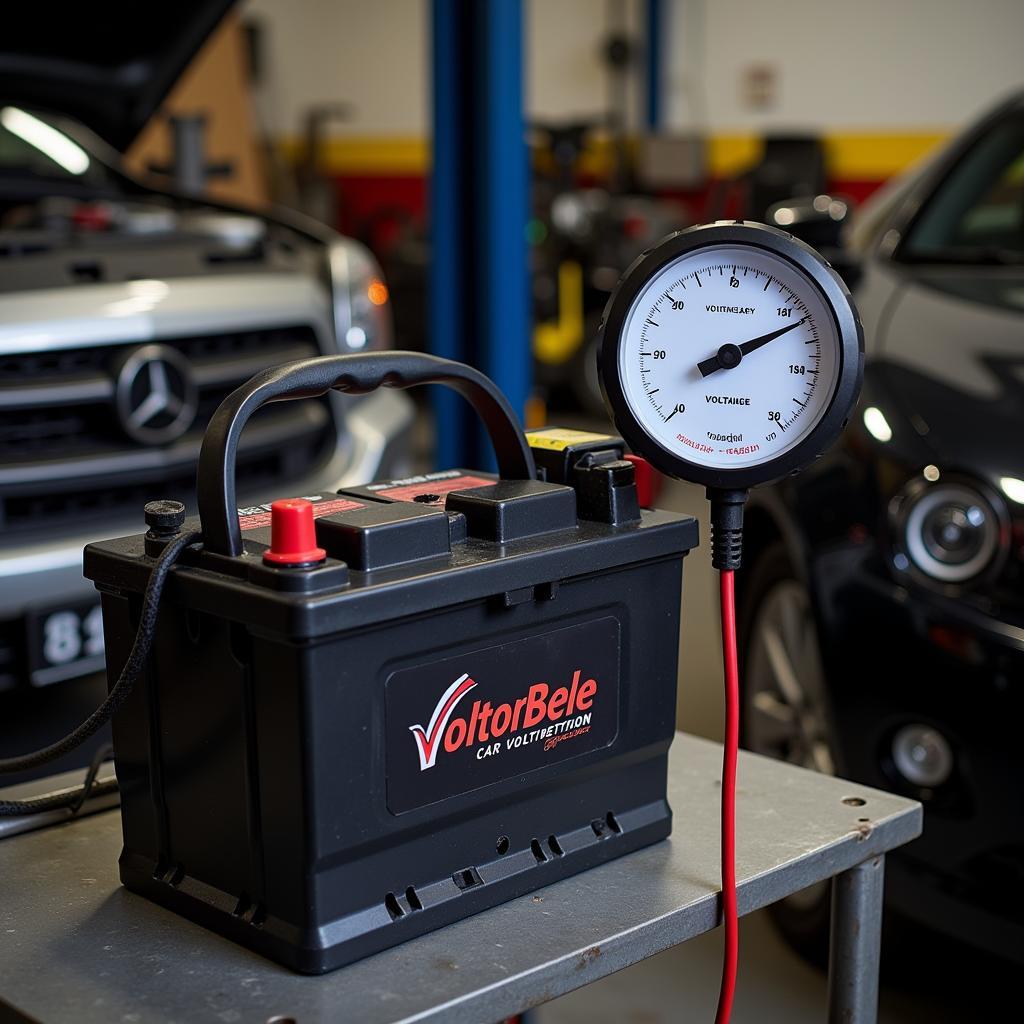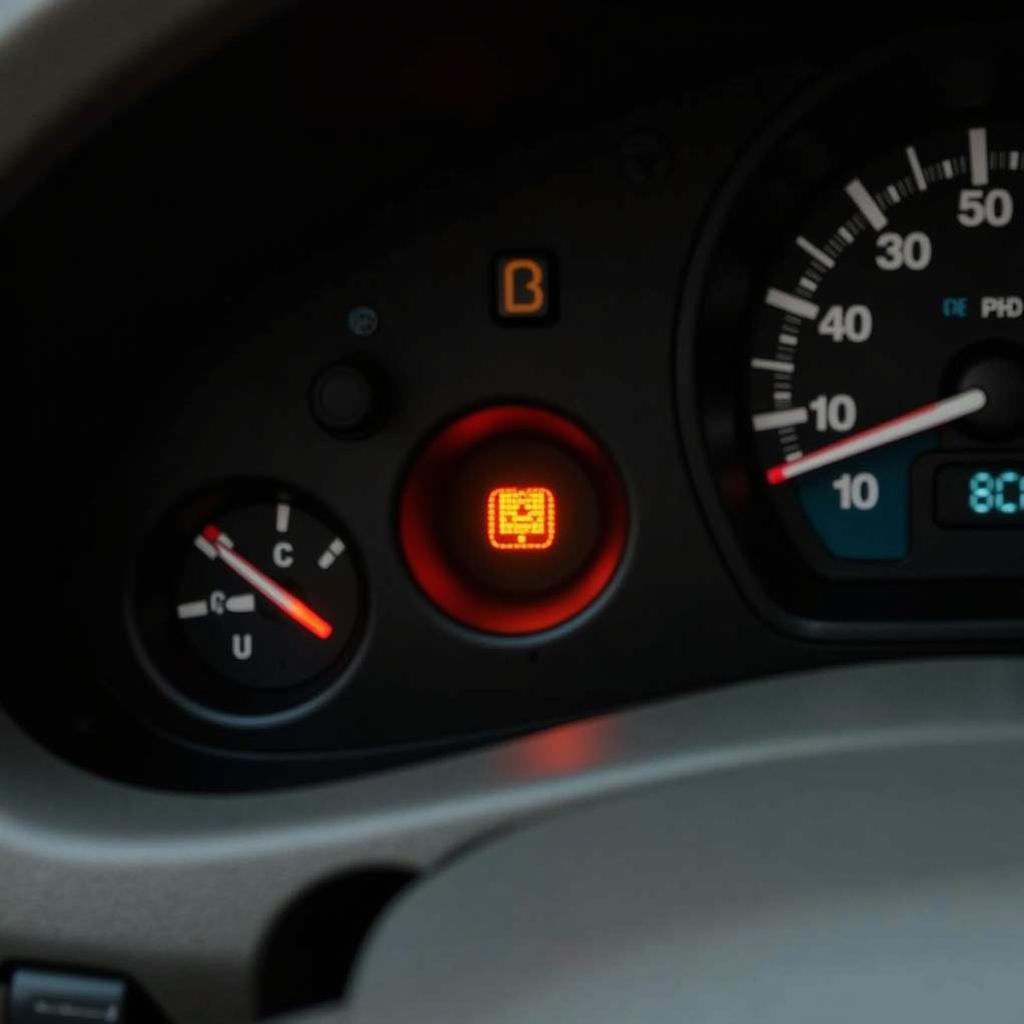A dead car battery can be a major inconvenience, leaving you stranded and frustrated. Knowing how to charge a dead car battery with jumper cables is a vital skill for any driver. This comprehensive guide provides a step-by-step approach to safely and effectively jump-start your car using jumper cables, getting you back on the road quickly.
Understanding the Basics of Jump Starting
Before we dive into the how-to, let’s understand why jump-starting works. Your car battery provides the initial electrical power needed to start the engine. When it’s dead, it can’t supply this power. Jumper cables allow you to borrow power from a working battery in another vehicle to crank your engine and recharge your dead battery.
Gathering Your Supplies
You’ll need a set of jumper cables, preferably heavy-gauge ones for better conductivity. Also, locate a vehicle with a working battery to serve as the donor car.
Step-by-Step Guide to Jump Starting Your Car
Follow these steps carefully to safely charge your dead car battery with jumper cables:
- Park the Cars: Position the donor car close to yours, ensuring the batteries are accessible and the cars aren’t touching. Turn off both ignitions.
- Attach the Red (Positive) Cable: Connect one end of the red cable to the positive (+) terminal of the dead battery. Then, attach the other end of the red cable to the positive (+) terminal of the donor battery.
- Attach the Black (Negative) Cable: Connect one end of the black cable to the negative (-) terminal of the donor battery. Then, connect the other end of the black cable to an unpainted metal surface on your car’s engine block, away from the battery. This acts as a grounding point.
- Start the Donor Car: Start the donor car and let it run for a few minutes to charge the dead battery.
- Start Your Car: Try starting your car. If it doesn’t start immediately, let the donor car run for a few more minutes and try again.
- Disconnect the Cables: Once your car starts, disconnect the cables in the reverse order of how you connected them: black cable from your car, black cable from the donor car, red cable from the donor car, and finally, red cable from your car.
 Connecting jumper cables to a dead car battery
Connecting jumper cables to a dead car battery
Important Safety Precautions
Safety is paramount when jump-starting a car. Always wear safety glasses and avoid touching the metal clamps together. Make sure the area is well-ventilated to prevent the buildup of flammable gases.
“Never connect the black cable directly to the negative terminal of the dead battery,” advises automotive electrical expert, John Miller. “This can cause sparks and potentially damage the battery.”
Troubleshooting Common Jump-Starting Issues
Sometimes, your car may not start even after following these steps. This could be due to a number of issues, such as corroded battery terminals, a faulty starter, or a more serious electrical problem.
“If you’ve tried jump-starting multiple times without success, it’s best to consult a qualified mechanic,” suggests Sarah Chen, a certified automotive technician. “They can diagnose the problem and recommend the appropriate repair.”
Maintaining Your Car Battery
Regularly checking your car battery’s health can prevent future jump-starting headaches. Look for signs of corrosion on the terminals and have your battery tested periodically by a professional.
Preventing Future Battery Drain
Remember to turn off all lights and accessories when you park your car to avoid draining the battery. Also, limit short trips, as they don’t give the battery enough time to recharge fully.
Conclusion
Knowing how to charge a dead car battery with jumper cables is an essential skill for every driver. By following these steps and taking the necessary safety precautions, you can jump-start your car effectively and get back on the road. Remember to maintain your battery regularly and address any underlying electrical issues to avoid future problems. Safe travels!
FAQ
- Can I jump-start a car with a different voltage battery? No, it’s not recommended. Connecting batteries with different voltages can damage both batteries and electrical systems.
- How long should I let the donor car run before starting my car? Typically, a few minutes is sufficient to provide enough charge to start your car.
- What if my car still won’t start after jump-starting? This could indicate a more serious problem. Consult a qualified mechanic for diagnosis and repair.
- How often should I check my car battery? It’s recommended to check your battery terminals for corrosion monthly and have your battery tested annually.
- Can I use jumper cables in the rain? Yes, you can, but exercise extra caution to avoid electrical shock. Ensure the cables are dry where you grip them and avoid standing in puddles.
- What should I do if I see sparks when connecting the cables? Stop immediately and double-check the connections. Ensure the cables are connected to the correct terminals and the grounding point is a clean, unpainted metal surface.
- How can I prevent my car battery from dying in the future? Ensure all lights and accessories are turned off when parked, limit short trips, and have your battery tested and replaced as needed.



